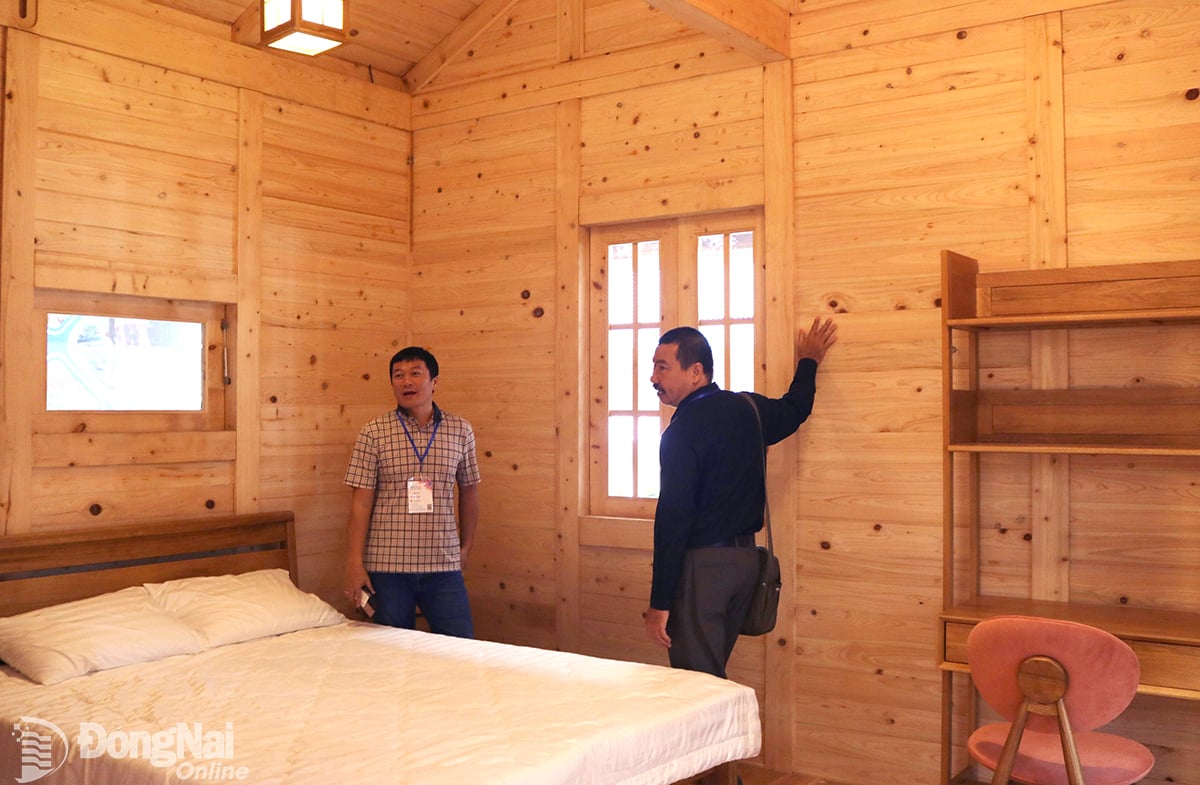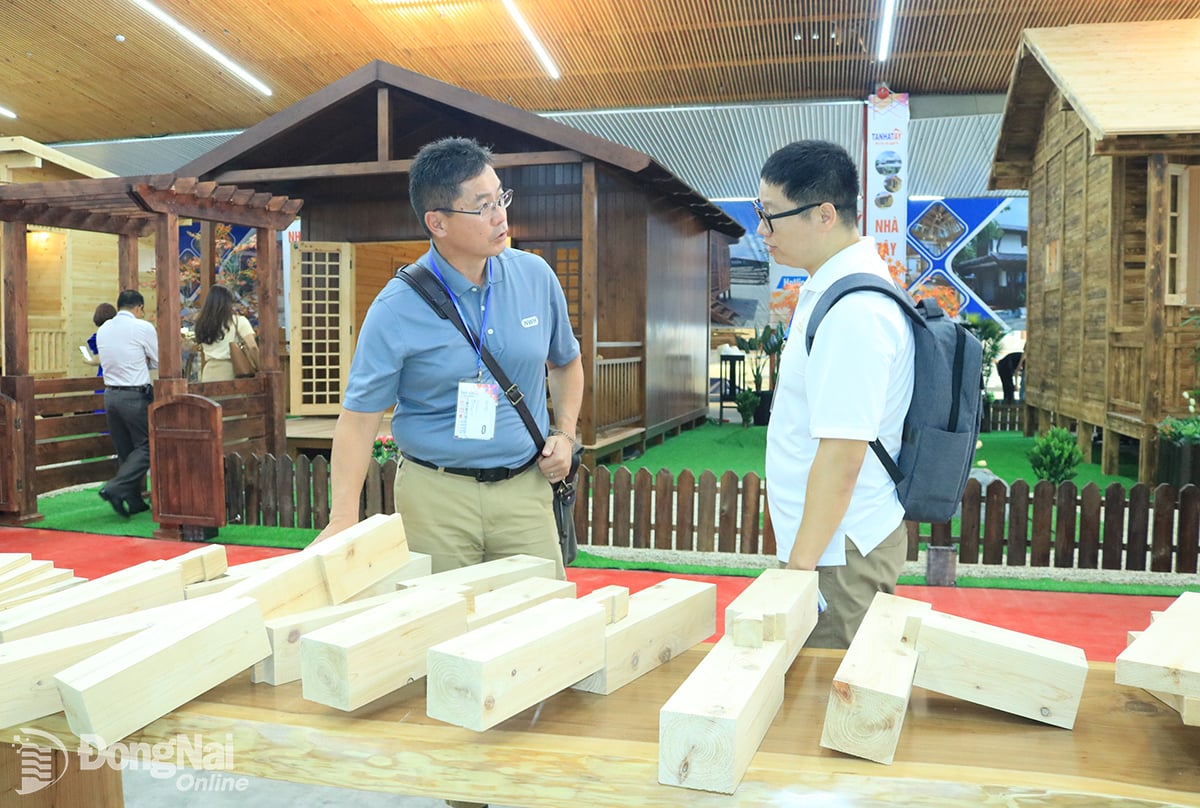Finished wooden houses are one of the new products with potential for export to Japan. Photo: V.GIA |
Japan is a demanding wooden furniture market with different consumer trends and lifestyles, which raises the issue of understanding customers' lifestyles and habits for businesses that want to export to this market.
Vietnam's important trading market
According to statistics from Vietnam Customs, in 2024, the total import and export turnover between Vietnam and Japan will reach 46.2 billion USD, an increase of 2.77% compared to 2023. Of which, the export of goods from Vietnam to Japan will reach 24.6 billion USD, an increase of 5.55% compared to 2023. Vietnam has a trade surplus with Japan of 1.23 billion USD.
Textiles, wood and wood products, seafood, means of transport and spare parts, equipment, tools and spare parts, computers, electronic products and components, phones of all kinds and components, footwear of all kinds, etc. are the strong products of Vietnam exported to Japan. These industries in the past year all had an increase in turnover from 0.65% - 37.65% compared to 2023.
Wood products are one of the five main export items of Dong Nai . In the first 3 months of 2025, Dong Nai exported more than 363.3 million USD worth of wood products.
For the wood industry alone, in 2024, wood and wood product exports to Japan accounted for 10.8% of the total nearly 16 billion USD of the entire industry's exports. In the first two months of this year, according to the Vietnam Timber and Forest Products Association, export turnover reached 2.52 billion USD, an increase of 12.4% over the same period in 2024. In addition to the United States, which is Vietnam's largest consumer market for wood and wood products, accounting for 55% of the market share, Japan and China are the next two largest markets with market shares of 11.7% and 9.8%, respectively.
Although it is a large market for exports in general and the wood industry in particular of Vietnam and has many opportunities to expand export value, in general, this is one of the markets with the most stringent import regulations in the world . Meanwhile, many Vietnamese products do not ensure stability and consistency in quality and are often limited in form, design, and variety, and do not pay attention to building product image and brand.
According to Vietnamese Trade Counselor in Japan Ta Duc Minh, to minimize risks, businesses need to have a systematic, long-term business plan for the Japanese market. At the same time, invest in improving the quality of human resources, especially applying digital technology in production and business activities.
Catch the trend to bring products to Japan
According to experts, in the long term, the potential for exporting wood and wood products, especially wooden furniture, to Japan is promising, because this is a market with a large population and high per capita income. In addition, the proportion of imported living room and dining room furniture, wooden frame chairs, and office furniture from Vietnam to Japan is still low, leaving room for exploitation.
Enterprises display wooden products at Ho Nai wooden furniture wholesale market (Bien Hoa city). Photo: V.The |
Although there is a lot of room for export, Vietnam also faces a lot of competitive pressure from countries with similar geographical locations such as China, Malaysia, Indonesia, etc. Another issue is that businesses need to survey and grasp the psychology and consumption trends of the people to have the right plan.
Mr. Tomohiro Koyama, editor of Home Living World Magazine (Japan) specializing in information about the wood industry, shared that for the Japanese market, the preference for buying wooden furniture is more focused on convenience and suitability, rather than on the brand. In addition, Japanese people as well as manufacturers and traders open direct stores to introduce and sell products, so export partners need to clearly understand the characteristics and consumer trends in order to make choices and find suitable customers.
Japanese people tend to build their living spaces with wood to be close to nature, environmentally friendly and good for health. Japanese people increasingly tend to live in wooden houses and apartments with wooden interiors.
On the business side, Chairman of the Board of Directors of Tan Vinh Cuu Joint Stock Company (Bien Hoa City) Vo Quang Ha said that for many years, the unit has cooperated with Japan in researching and building wooden houses in the style of this country. Initially, Japanese-style wooden houses have been ordered by many partners in Vietnam, especially tourist areas. Currently, Tan Vinh Cuu Joint Stock Company is researching to cooperate and build complete wooden houses for the Japanese market.
Van Gia
Source: https://baodongnai.com.vn/kinh-te/202504/tim-huong-xuat-khau-go-sang-nhat-ban-fb40f58/


































































































Comment (0)